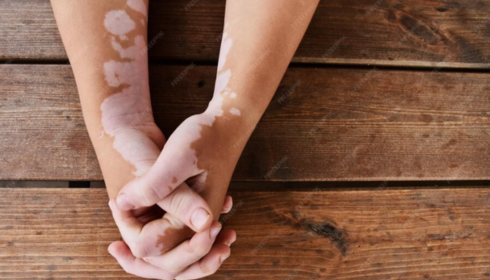Do Sun Exposure and Stress Trigger Vitiligo Progressio

Vitiligo is a disease that changes the color of the skin. People who have vitiligo get white spots on various areas of their bodies. These spots occur when the skin pigment cells called melanocytes do not produce. Vitiligo is not infectious. It can occur in any person regardless of their age, sex, or origin.
Though the cause of this condition is still unknown, vitiligo and sun exposure are the two inseparable factors. Nevertheless, the physicians guess that it occurs because of a combination of genes, immune system problems, and some environmental triggers like vitiligo and sun exposure.
What is Vitiligo?
Vitiligo is a disease that causes the skin to lose its pigmentation. When the immune system attacks the pigment cells in the skin, white patches will appear. These spots can be found on any part of the body, such as the hands, feet, face, and lips. Vitiligo may also affect hair by causing it to become white or gray.
Besides that, vitiligo is not a cause of physical pain but can be a source of emotional distress among patients. A lot of people with vitiligo feel that they are self-conscious or nervous because of their appearance. This distress often highlights the connection between emotional stress and vitiligo in daily life.
What Are The Common Symptoms Of Vitiligo?
The white patches on the skin are the main symptom of vitiligo. These spots are typically smooth, and the common places that are mostly affected are
- Facial parts, mainly the eye region, the mouth, and the lips.
- Hands and fingers.
- Feet and toes.
- Elbows and knees.
- Armpits and groin.
- The hair on the head, eyebrows, eyelashes, or beard that becomes gray or white prematurely.
- The tissues inside the mouth or nose that lose color.
Vitiligo most of the time will initiate with tiny spots that, over time, increase their size. There are some instances where the patches may be the same size for years. The condition, however, can also progress fast in some cases, especially when people are not managing vitiligo in the sun carefully.
Can Sun Exposure and Stress Trigger Vitiligo?
Both genes and environment play a part in the occurrence of vitiligo. This condition can be aggravated by two factors, such as sun exposure and stress.
Sun Exposure
- Sunlight is important for health, but too much sun can harm people with vitiligo.
- Affected skin has no pigment, making it more sensitive to harmful UV rays.
- Excess exposure may cause sunburn, irritation, or inflammation.
- Sunburn can also trigger the spread of white patches.
- Doctors recommend using sunscreen regularly.
- Wearing protective clothing helps prevent sun damage.
Stress
- Stress can speed up the progression of vitiligo.
- Emotional stress affects the immune system.
- A weakened or overactive immune system may attack melanocytes, the cells that give skin its color.
- Many patients report worsening vitiligo during stressful times.
- Stress management methods can help reduce the risk.
- Techniques like meditation, yoga, and deep breathing are especially useful.
Even though sun exposure and stress may be the main causes of vitiligo progression, they are not the only ones. The other causes that trigger the disease include skin injuries, chemical exposure, and autoimmune conditions. People often explore modern therapies, including the best vitiligo treatment in Coimbatore, for comprehensive management.
How Can Vitiligo Be Treated?
The condition can be alleviated with a variety of treatments before it progresses into a serious complication. The main aim of the treatment is to bring back the original skin color and, at the same time, stop the further spread of the white patches.
Topical Treatments
Ointments will be prescribed for patients who suffer from vitiligo, as their anti-inflammatory properties and pigment restoration ability can be beneficial. Phototherapy treatments will also be considered for pigment cell regeneration in the large affected areas.
Surgical Options
- The skin grafting procedure involves replacing small pieces of pigmented skin on the white patches.
- Micropigmentation, which can also be called tattooing, can merge the white patches with the normal skin, thereby making the white patches less visible.
Lifestyle Measures
- The use of sunscreen and wearing protective clothing can keep the skin from getting sunburned.
- One may choose to manage stress with meditation, physical exercises, and relaxation techniques.
- Try not to injure your skin or use strong chemicals that may make it worse.
Cosmetic Options
- White patches may be covered by makeup or self-tanning products.
- Makeup may be used to give the person confidence by improving the overall look of the person.
Usually, the result is better when the treatment is done early, especially under the care of the best skin hospital in Coimbatore.
Conclusion
Vitiligo is a skin disorder resulting in white spots due to the absence of pigmentation. Though it is not contagious or life-threatening, it can cause the person to have low self-esteem. This condition can be managed with stress managements and skin care. The treatments, such as phototherapy, surgery, and lifestyle changes, might restore the original color to the skin and also stop the progression of the disease. Visiting a dermatologist at an earlier stage can provide positive results.